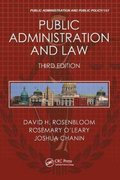Answer the following question thoroughly.
*What is Marx's "Theory of Alienation " all about and why he considers labor as a commodity.
*Discuss Marx's "Theory of Exploitation" and the creation of surplus value.
*Enumerate and describe the different stages of development of human societies in Marx's "Historical Materialism ".
*Discuss Marx's notions of class conflict and class struggle.
Karl Marx (1818 - 1883) (image source: https://en.wikipedia.org/wiki/Timeline_of_Karl_Marx#/media/File:Karl_Marx.jpg) Karl Marx is famous for his theories about capitalism and communism. Together with Fredrich Engels, he published "The Communist Manifesto" (1848) and "Das Kapital" (1867, 1885, 1894). His earlier work, "Theory of Alienation" in 1844 which was unpublished, was about the worker under capitalism. Marx depicted the worker under capitalism as suffering from four (4) types of alienated labor: 261. Alienation from the product; where the worker had no control over the product; 2. Alienation from the process of production, where the worker is controlled and is told what to do; 3. Alienation from himself; where at work; he does not belong to himself but to another person; 4. Alienation from other workers; where he is pitted against them for higher wages. Another of Marx's earlier work was the \"Theory of Historical Materialism\" {1846}. This theory of history sees society as being fundamentally determined; at any given time; by the material conditions or by the relationships which people have with each other; for producing and reproducing the means of existence. Engels and Marx identified so: {5} successive stages of the development of these material conditions that existed in Western Europe: 1.} pnmitive communism; 2.} slave society; 3.} feudalism; 4.} capitalism; 5.) socialism; and 6.} communism. This theory of history centered around the idea that forms of society rise and fall as they further; and then impedes the development of human productive power. In his concept of class struggle; Marx established a conflict model of social systems. He dened dass struggle as the tension which exists in society clue to competing socioeconomic interests and desires between people of ditferent classes. Herein; Mann: identied capitalist society as containing two [2} social groups1'l .} labor {proletariat} who earn their livelihood from selling their labor power and have little choice but to work for the capitalist; and 2.} capital [bourgeoisie or capitalists) who get their incomes from the surplus value that is appropriated from the labor who creates wealth. lGlass struggle leads to class conict at every stage of development of societies. Hereunder are the different stages: Stages of History and Class Conflict at Every Stage Oppressor Oppressed Primitive communism No classes No conflict Slavery Slave owners Slaves Feudalism Landowners Serfs Capitalism Bourgeoisie Proletariat Socialism State managers Workers Communism No conflict No conflict Marx predicted that because of capitalism's relentless pursuit of profits by way of competition and technological progress to lower the cost of production, the rate of profits in an economy would always be falling over time. This situation would eventually lead to the decline of capitalism. One of Marx's major writings, which he again co-authored with Engels was the "Communist Manifesto" (1848). It is divided into four (4) sections: 1.) preamble which embodies Marx's materialist conception of history; 2.) expresses the will of the party to defend the common interest of the working class; 3.) distinguishes communism from other socialist doctrines prevalent; and 4.) discusses the communist position on struggle in various countries in the mid-nineteenth century.Another major work of Marx was \"Das Kapital" which was a critique of capitalism. The principal idea of this piece of work was that on the motivating force in capitalism which is the exploitation of labor and on a basic understanding of the rate of return to owners of capital. Theory of the Surplus value of Labor This theory was based on Ricardo's labor theory of value. Marx held that human labor was the source of economic value. Surplus value is equal to the new value created by the workers in excess of their own labor cost which is appropriated by the capitalist as profits when products are sold. The capitalist pays his workers less than the value that their labor has added to the goods, usually enough to maintain the worker at a subsistence level. Marx subscribed to the subsistence theory of wages of Ricardo but for a dierent reason. He said that it was not the pressure of population that drove wages to the subsistence level but rather the existence of a large number of unemployed workers. Of the total worth of the workers' labor, the compensation accounts for only a mere fraction that is equivalent to the workers' means of subsistence. The remainder is the \"surplus labor\". lvlarx speculated that the owner of capital could force the worker to spend more time on the job than was necessary for earning subsistence income and the excess product {surplus value} thus created would be claimed by the owner. lvlarx claimed that in capitalism. labor is considered as merely a commodity and not as a resource










